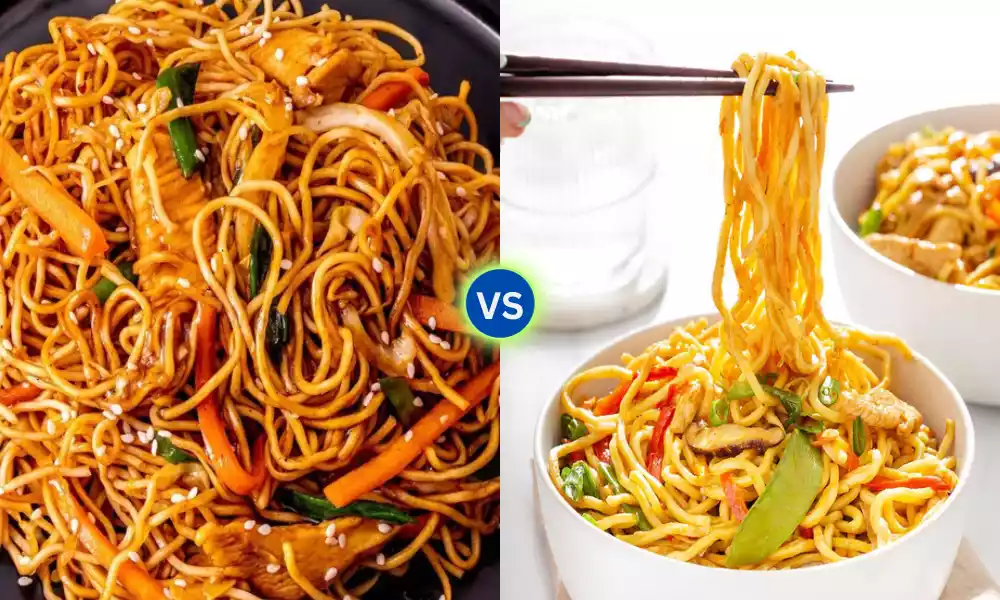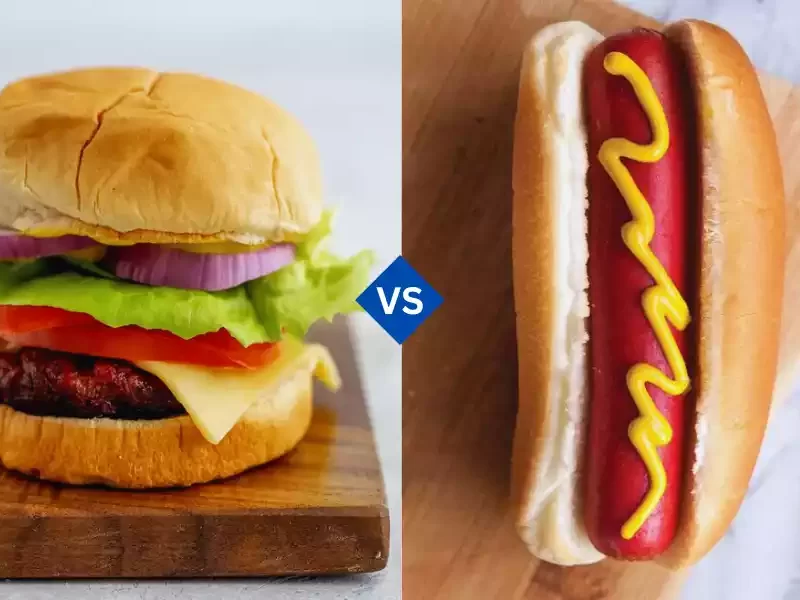Chow Mein and Lo Mein are both popular Chinese noodle dishes, but they differ in preparation and texture. Chow Mein, which means “stir-fried noodles,” involves cooking noodles until they’re crispy and then stir-frying them with vegetables, meat, or seafood and a savory sauce.
Lo Mein, translating to “tossed noodles,” involves boiling noodles until they are soft and then mixing them with ingredients and sauce without the additional step of stir-frying.
Both dishes can be found in various forms in Chinese cuisine, with different regions having their unique takes on these classic noodle dishes. The choice between Chow Mein and Lo Mein often comes down to personal preference for noodle texture and cooking style.
Definition of Chow Mein
Chow Mein is a Chinese noodle dish that has become popular in many parts of the world. The term “Chow Mein” comes from the Cantonese language and means “stir-fried noodles.
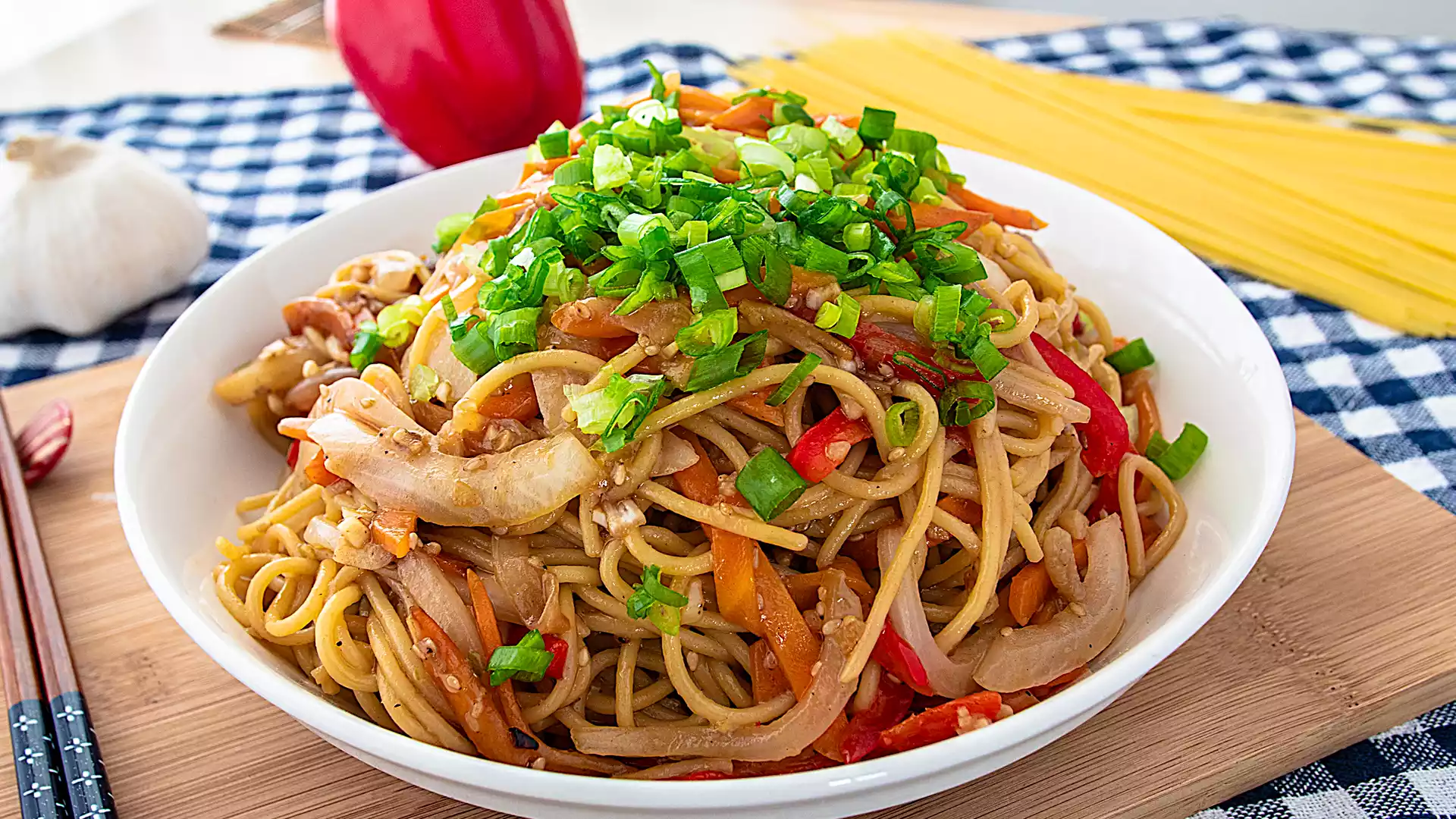
” This dish is typically made by stir-frying noodles with a variety of ingredients such as vegetables, chicken, beef, pork, shrimp, or tofu. The noodles used in Chow Mein are usually made from wheat flour and may be either flat or rounded.
The cooking process involves frying the noodles to a crispy texture before they are mixed with the other ingredients. The mixture is then seasoned with soy sauce, oyster sauce, or other Chinese sauces to add flavor.
The key characteristic of Chow Mein is the texture of the noodles, which are meant to be slightly crispy on the outside while remaining tender on the inside. This contrasts with other Chinese noodle dishes, like Lo Mein, where the noodles are soft and fully cooked through. Chow Mein is often served as a main dish and can be customized with various toppings and sauces according to regional or personal preferences.
Definition of Lo Mein
Lo Mein is a classic Chinese dish known for its soft and fully cooked noodles. The term “Lo Mein” comes from the Cantonese language, meaning “tossed noodles.” In this dish, wheat flour noodles are boiled until they are soft, then they are mixed with a variety of ingredients such as vegetables, chicken, beef, pork, seafood, or tofu.
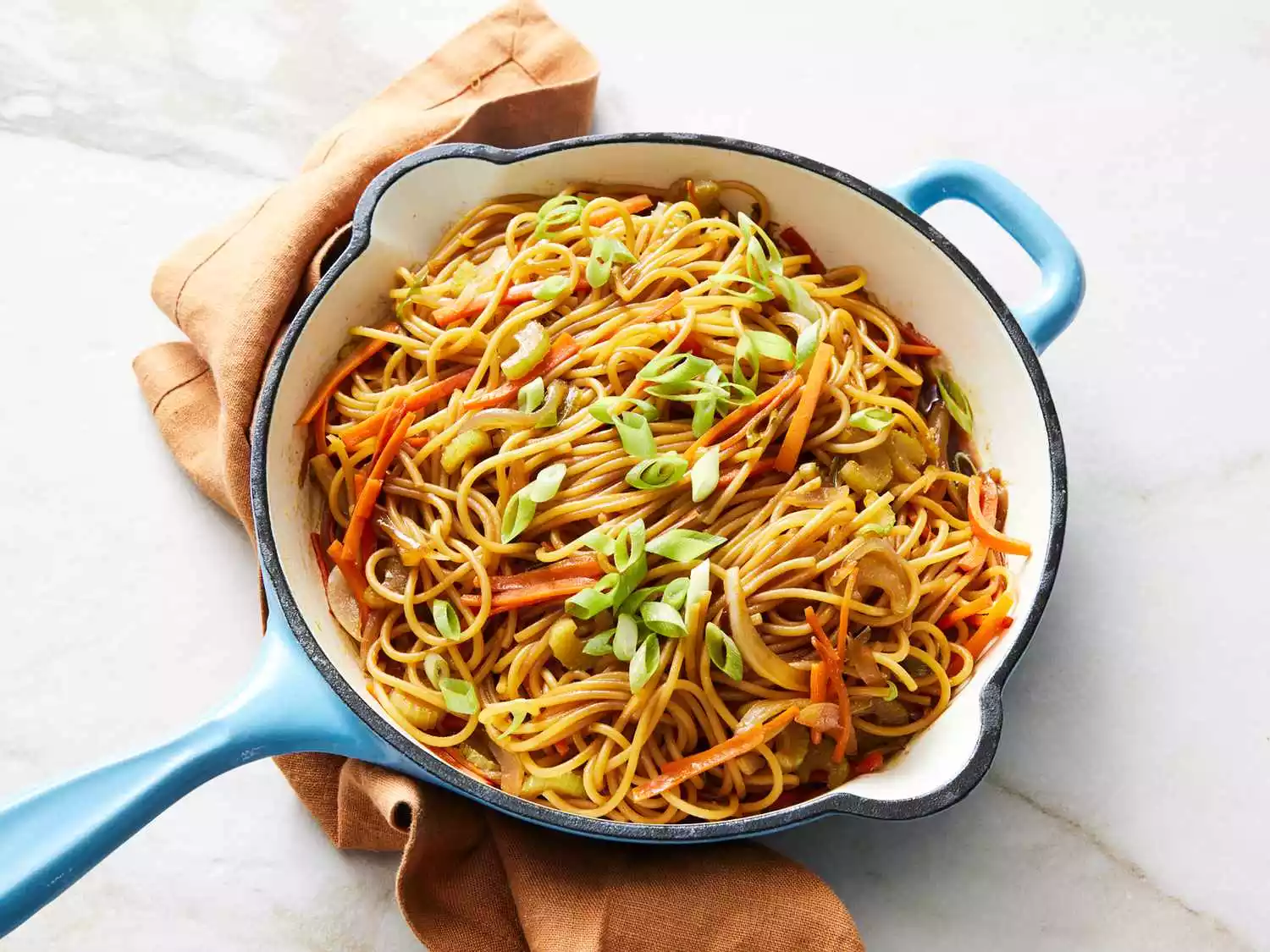
The preparation of Lo Mein involves tossing the cooked noodles with the other ingredients and a savory sauce, typically made from soy sauce, sesame oil, oyster sauce, or other Chinese sauces. This tossing ensures that the noodles absorb the flavors of the sauce and the other ingredients, resulting in a harmonious blend of tastes and textures.
Unlike Chow Mein, where the noodles are stir-fried to a crispy texture, the noodles in Lo Mein retain a soft and pliable consistency. This makes Lo Mein a distinctly different dish, focusing on the smooth and velvety texture of the noodles, complemented by the flavors of the sauce and the freshness of the added ingredients.
Lo Mein is commonly served as a main course and can be tailored with various combinations of meats, vegetables, and sauces to cater to different palates.
Importance of Chow Mein vs Lo Mein in Chinese Cuisine
Chow Mein and Lo Mein hold significant places in Chinese cuisine, both representing the versatility and regional diversity of Chinese noodle dishes. Their importance can be understood in several aspects:
- Cultural Representation: Both dishes originate from Chinese culinary traditions, with Chow Mein having roots in Cantonese cuisine and Lo Mein in different regional cuisines of China. They showcase the Chinese art of noodle making and cooking, highlighting how a basic ingredient like noodles can be transformed in varied ways.
- Variety and Adaptability: Chow Mein and Lo Mein demonstrate the adaptability of Chinese cuisine. These dishes have been modified in different regions of China and around the world, incorporating local ingredients and flavors. This adaptability reflects the dynamic nature of Chinese cuisine and its ability to blend with various culinary cultures.
- Culinary Techniques: The preparation of these dishes illustrates two different cooking techniques – stir-frying for Chow Mein and boiling and tossing for Lo Mein. These techniques are staples in Chinese cooking, and the dishes serve as examples of how different methods can yield distinctly different flavors and textures from similar basic ingredients.
- Popularity and Accessibility: Both Chow Mein and Lo Mein are extremely popular, not just in China, but globally. Their simplicity, combined with the richness of flavors, makes them accessible and appealing to a wide range of palates. They are often among the first dishes people try when exploring Chinese cuisine, acting as ambassadors of the culinary tradition.
- Nutritional Balance: These noodle dishes typically include a variety of vegetables, proteins, and carbohydrates, embodying the Chinese dietary philosophy of balanced and harmonious meals. This balance is a key aspect of traditional Chinese cuisine.
Chow Mein and Lo Mein are more than just noodle dishes; they are reflections of Chinese culinary history, cultural adaptation, and gastronomic diversity. Their importance in Chinese cuisine lies in their ability to convey culinary traditions, adapt to changing tastes, and provide a balanced, flavorful meal.
Comparison table of Chow Mein vs Lo Mein
Here’s a comparison table highlighting the key differences between Chow Mein and Lo Mein:
| Feature | Chow Mein | Lo Mein |
|---|---|---|
| Meaning | “Stir-fried noodles” in Cantonese | “Tossed noodles” in Cantonese |
| Origin | Cantonese cuisine | Various regions in China |
| Noodle Texture | Crispy and slightly chewy | Soft and smooth |
| Cooking Method | Noodles are stir-fried | Noodles are boiled and then mixed with ingredients |
| Ingredients | Noodles, vegetables, meat (chicken, beef, pork), seafood, sauces | Noodles, vegetables, meat (chicken, beef, pork), seafood, sauces |
| Sauce | Often heavier and used during stir-frying | Lighter, mixed in after boiling |
| Serving Style | Typically drier due to stir-frying | Generally, more sauce, results in a smaller dish |
| Regional Variations | Variations exist based on region and recipe adaptations | Variations exist based on region and recipe adaptations |
This table summarizes the primary distinctions between the two dishes in terms of their preparation, texture, and serving style. Both dishes, are versatile and have numerous regional variations, reflecting the diversity of Chinese cuisine.
Historical context and development
The historical context and development of Chow Mein and Lo Mein reflect the broader evolution of Chinese cuisine and its global spread.
Chow Mein:
- Origins in Chinese Cuisine: Chow Mein originated in northern China, where wheat-based dishes like noodles are staples. It was primarily associated with Cantonese cuisine and was adapted over time to suit local tastes.
- Evolution and Adaptation: As Chinese immigrants moved to different parts of the world, particularly to the United States in the 19th and early 20th centuries, they adapted their traditional recipes to local ingredients and tastes. This led to the development of various styles of Chow Mein, some of which are quite different from the original dish.
- Global Popularity: In the West, particularly in the U.S., Chow Mein became popular as a crispy, stir-fried noodle dish, often served with a variety of meats and vegetables. This Western version sometimes differs significantly from traditional Cantonese Chow Mein, which may be softer and more akin to what Westerners would recognize as Lo Mein.
Lo Mein:
- Roots in Chinese Cooking: Lo Mein also originated in China, with a history intertwined with that of Chinese noodle culture. It’s less region-specific than Chow Mein and is found in various forms across different Chinese cuisines.
- Development and Variations: Similar to Chow Mein, Lo Mein evolved as it spread, particularly in North America. The dish was adapted to appeal to local palates, with variations in the types of noodles, ingredients, and sauces used.
- Global Recognition: Lo Mein became recognized internationally, particularly in American Chinese cuisine, as a soft noodle dish tossed with a sauce, meats, and vegetables. It’s often seen as a milder and more sauce-coated alternative to Chow Mein.
Both Chow Mein and Lo Mein exemplify the dynamic nature of culinary traditions, demonstrating how dishes transform and adapt when they travel across cultures and regions.
Their development over time is not just a story of culinary evolution, but also of cultural exchange and adaptation. These dishes have become integral parts of global cuisine, transcending their origins to become universally loved.
Preparation and Cooking Methods
The preparation and cooking methods for Chow Mein and Lo Mein differ significantly, contributing to their distinct textures and flavors:
Chow Mein:
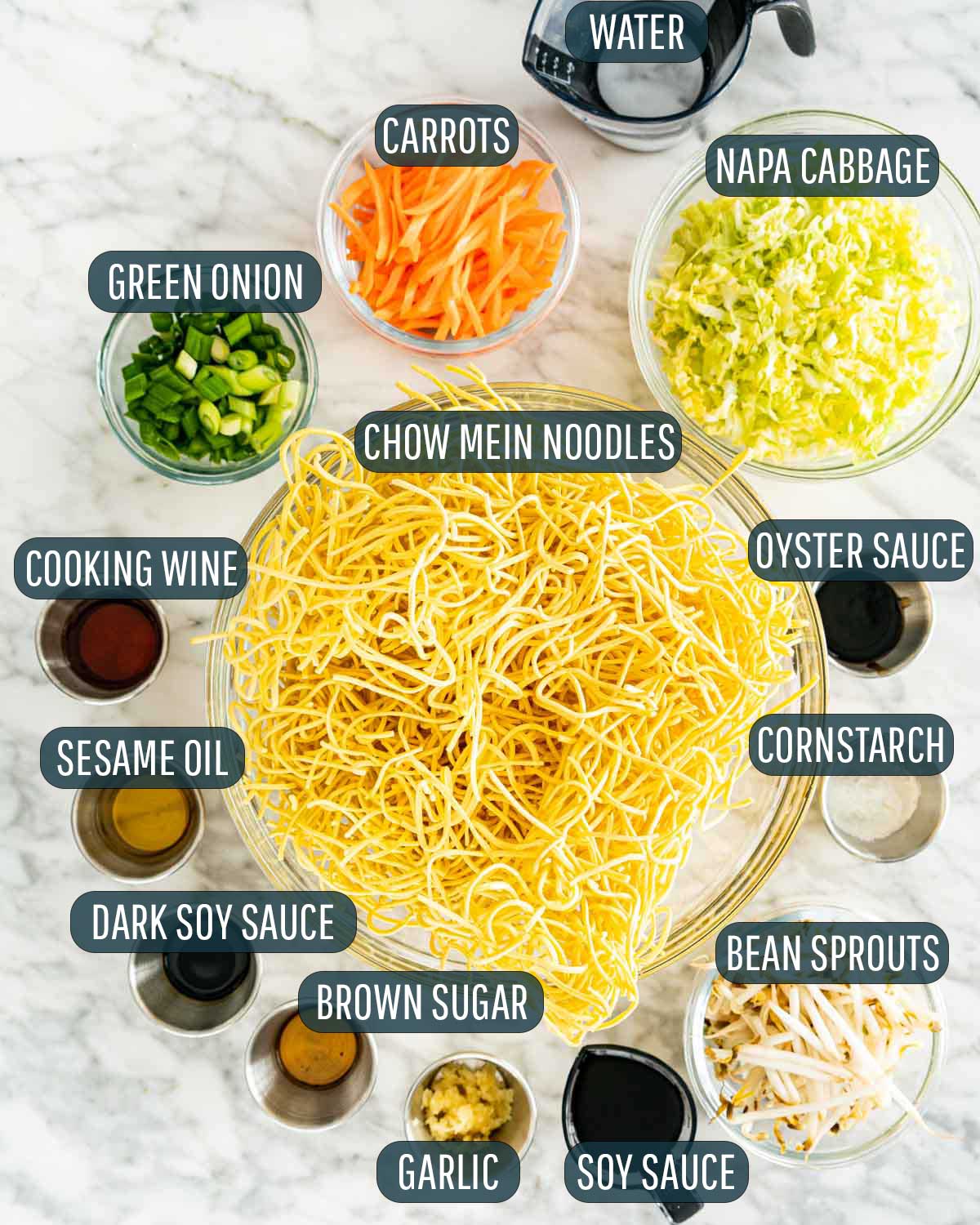
- Noodle Preparation: The noodles used in Chow Mein are typically parboiled or sometimes used directly, depending on the type. The key is to ensure they’re firm enough to withstand stir-frying without becoming soggy.
- Stir-Frying: The noodles are stir-fried in a wok with oil, which is crucial for achieving the characteristic crispy texture. This is typically done at a high temperature to quickly cook the noodles and give them a slightly charred flavor.
- Adding Ingredients: Once the noodles are partially cooked and crispy, other ingredients like sliced vegetables, proteins (such as chicken, beef, pork, or shrimp), and aromatics (like garlic and ginger) are added to the wok and quickly stir-fried.
- Seasoning: The dish is seasoned with sauces (such as soy sauce, oyster sauce, or hoisin sauce) and spices. The seasoning is done towards the end of cooking to evenly coat all the ingredients.
- Final Cooking: Everything is stir-fried together until the ingredients are well combined and the noodles are fully crispy.
Lo Mein:
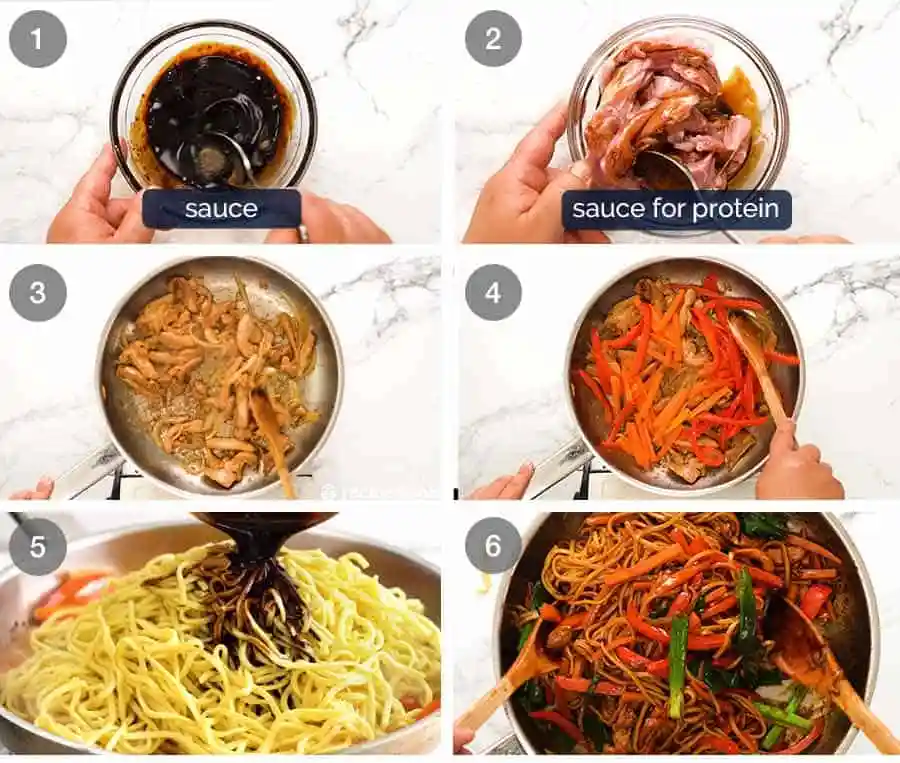
- Boiling Noodles: Noodles for Lo Mein are fully boiled until they are soft and pliable. It’s important to avoid overcooking them, as they should retain some elasticity.
- Preparing Ingredients: While the noodles are boiling, the other ingredients – such as meats, vegetables, and aromatics – are cooked separately, usually sautéed in a wok or pan.
- Combining Ingredients: After draining, the boiled noodles are added to the wok with the cooked ingredients.
- Tossing with Sauce: The noodles and ingredients are gently tossed together with the sauce, which is typically a mixture of soy sauce, sesame oil, and potentially other seasonings. This tossing allows the noodles to absorb the flavors without becoming crispy.
- Final Touches: The dish is cooked for a few more minutes to ensure everything is heated through and the flavors are well combined.
Chow Mein involves a stir-frying process that gives the noodles a crispy texture, while Lo Mein features a gentler combination of boiled noodles with other ingredients, resulting in a softer texture. Both methods are fundamental to achieving the authentic taste and feel of these respective dishes.
Regional and Cultural Significance
The regional and cultural significance of Chow Mein and Lo Mein can be understood by examining their origins, adaptations, and roles in both Chinese and global culinary contexts.
Chow Mein:
- Cantonese Origins: Chow Mein originated from the Cantonese region of China. It reflects the Cantonese culinary tradition of stir-frying – a quick cooking method that retains the freshness and texture of ingredients.
- Adaptation and Variation: As Chinese immigrants settled in different parts of the world, especially in North America, they adapted Chow Mein to suit local tastes. This has led to diverse variations, some of which are quite different from the original Cantonese version.
- Symbol of Chinese-American Cuisine: In many Western countries, particularly the United States, Chow Mein has become synonymous with Chinese-American cuisine, representing a fusion of Chinese cooking techniques with Western tastes.
- Cultural Exchange and Adaptability: The evolution of Chow Mein in different countries is a testament to the adaptability of Chinese cuisine and its ability to blend with various culinary cultures.
Lo Mein:
- Pan-Chinese Representation: Unlike Chow Mein, which is specifically Cantonese, Lo Mein is found in various forms across different Chinese regional cuisines. It showcases the versatility of Chinese noodle dishes.
- Global Recognition: Lo Mein gained international recognition, particularly in Western countries, where it is often seen as a staple in Chinese restaurants. Its mild flavor and soft texture have made it a popular choice among diverse palates.
- Representation of Noodle Culture: In Chinese culture, noodles are symbolic of longevity and prosperity. Lo Mein, being a popular noodle dish, carries this cultural significance, especially during celebrations and festivals.
- Culinary Diversity within Chinese Cuisine: Lo Mein represents the diverse culinary techniques of Chinese cuisine – from boiling and tossing noodles to the balance of flavors in its sauce.
Both Chow Mein and Lo Mein are not just popular dishes but also cultural ambassadors of Chinese culinary traditions. They illustrate how Chinese cuisine has evolved and adapted over time, gaining a unique identity in different parts of the world while still retaining its intrinsic qualities. Their popularity in various regions reflects the global appeal of Chinese food and its significant role in cultural exchange through cuisine.
Similarities between Chow Mein vs Lo Mein
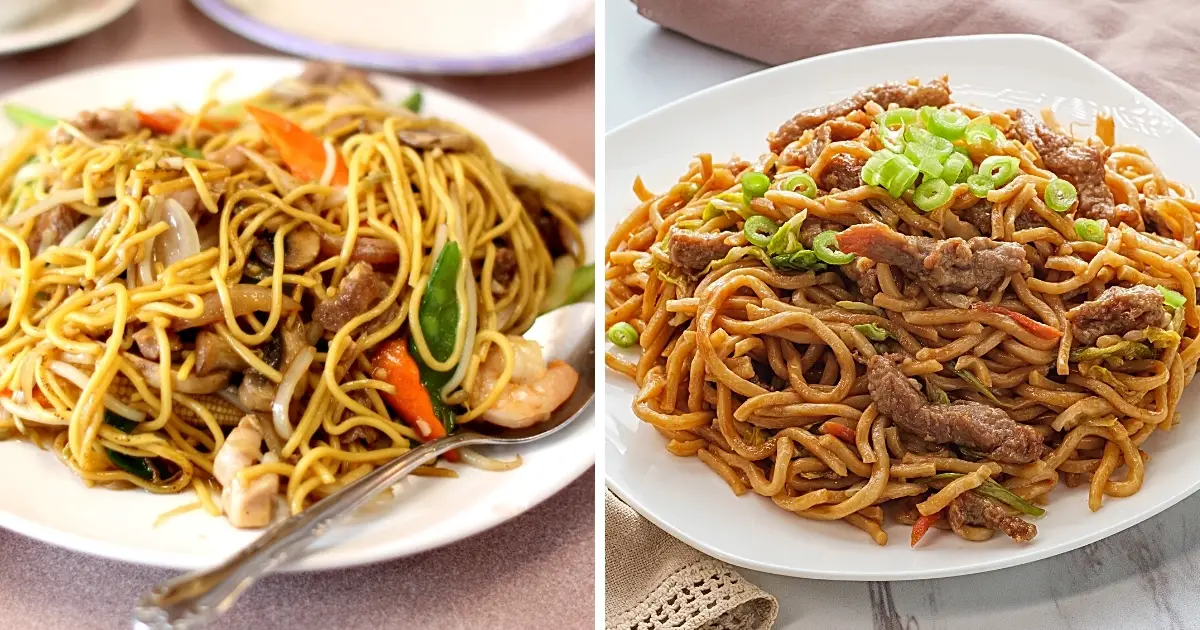
Chow Mein and Lo Mein, despite their differences, share several similarities that underline their common roots in Chinese cuisine:
- Basic Ingredient: Both dishes are primarily based on noodles made from wheat flour, which is a staple in Chinese noodle dishes.
- Chinese Origin: Both Chow Mein and Lo Mein have their origins in Chinese cuisine and are popular in various regions of China as well as in Chinese communities worldwide.
- Versatility in Ingredients: Both dishes are highly adaptable and can include a variety of ingredients such as different types of meats (chicken, beef, pork), seafood, tofu, and an assortment of vegetables.
- Flavor Profiles: While the sauces and seasonings may vary, both dishes typically feature a savory flavor profile, often enhanced with ingredients like soy sauce, oyster sauce, sesame oil, and garlic.
- Culinary Adaptations: Chow Mein and Lo Mein have been adapted in various ways outside of China, reflecting local tastes and ingredient availability. This adaptability has made them popular in many countries.
- Serving Occasions: Both are commonly served as main dishes and are staples in Chinese restaurants worldwide. They are often featured in both casual dining and takeout menus.
- Nutritional Value: Each dish can provide a balanced meal with carbohydrates (noodles), protein (meat or tofu), and vitamins and minerals (vegetables).
- Cultural Significance: Both dishes are significant in representing Chinese culinary culture and are often included in celebrations and family meals.
Chow Mein and Lo Mein are two expressions of Chinese noodle cuisine, sharing many core elements while differing in preparation and texture.
Summary
Chow Mein and Lo Mein, both iconic dishes in Chinese cuisine, differ primarily in preparation and texture. Chow Mein, known for its stir-fried, crispy noodles, offers a bold and smoky flavor profile.
Lo Mein, featuring boiled, soft noodles tossed with sauce, presents a more subtle and evenly coated taste. Each dish reflects the diversity and adaptability of Chinese culinary traditions, catering to a wide range of palates globally.

